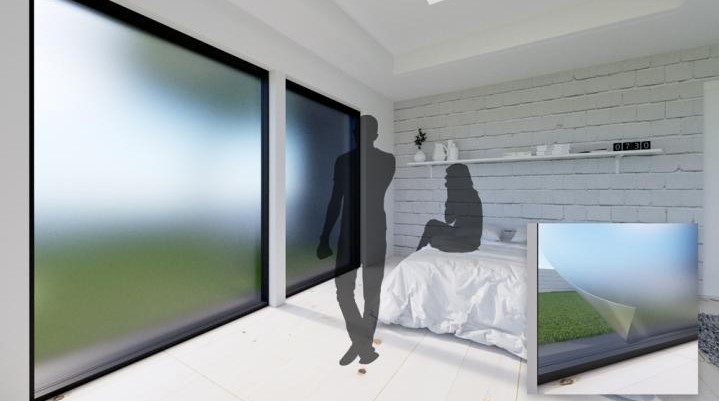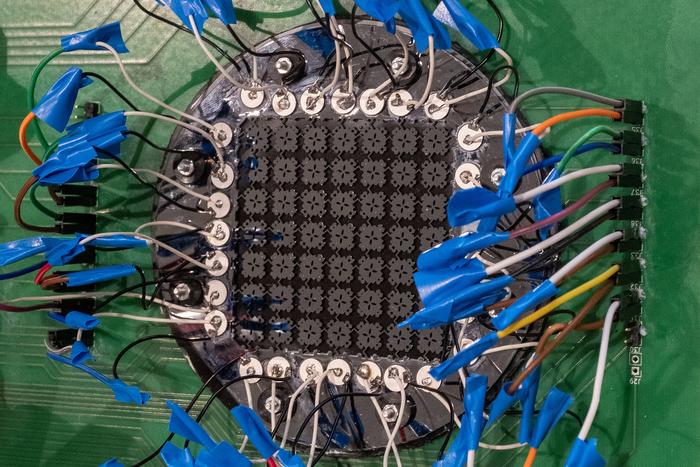By Kate S.
Today, the University of Cincinnati announced that, together with industry partners, they’ve invented new ‘smart window’ shade technology that could improve upon existing windows and blinds. The researchers say that this patent-pending research will lead to low-cost window tinting that dynamically adapts for brightness, color, and opacity. The new tech is designed to provide privacy while allowing light in.
A collaboration between the University of Cincinnati, Hewlett Packard, and EMD/Merck Research Labs has resulted in a patent-pending product that the team is calling ‘tunable’ window tinting. The breakthrough means traditional window shades could soon be replaced by a low-cost tinting where the brightness, color (warm oranges or cool blues, much like incandescent light bulbs), and opacity (privacy) are adjustable by the user.

Smart Windows: High Tech at a Low Price?
According to the research findings, these smart windows are simple to manufacture and affordable for both business and home use. The technology can be integrated into new windows during the manufacturing process or applied to existing windows by means of a roll-on coating that consists of a honeycomb of tiny electrodes.
Anticipating Smart Window Benefits
Currently, most home and commercial windows use mechanical shades to provide privacy and to block light, heat, or cold. Electronically controlled window tinting is available, but only offers the same clear and opaque options of mechanical shades. University of Cincinnati says that their new invention offers much more variety.

According to Jason Heikenfeld, UC professor of electrical engineering and computing systems, “Simple electronic window switching is not enough. You need to provide consumers with something you can’t do mechanically, and for which there is already a large demand. For example, there is already proven demand for control of color temperature in the light bulb market, and after all, windows are a source of lighting. Maybe even more compelling, go home to your neighborhood and look at the drawn blinds for privacy but which also block sunlight. What if you could have your privacy and also let the light in at any brightness you want?”
A smart window might not take your house off the grid, but it could be an ecologically friendly option because it can independently control both visible light and infrared heat transmission. So, you could block infrared heat from the sun in the summer, but let it into the house in the winter for passive solar heating.
In other words, a new smart window could allow users to enjoy light, comfortable temperatures, and privacy at the same time. Windows could go milky for privacy so no one can see in, but still allow 90 percent or more of the available light in. Alternately, a setting change could dim the entering light or change the color of the light along a spectrum from cooler blue to warmer yellow.
How the Smart Window Was Developed
The smart window technology has been in development for about three years. The challenge for the UC, Merck, and HP team was how to apply adaptive optics technology (common in e-paper electronic displays, mobile, and computer screens) to a large window. Moreover, the team needed find a solution that could be manufactured for less than $30 per square foot, which is the industry standard for window manufacturing.
“Basically, one color has one charge. Another color has another charge, and we apply voltage to repel or attract the colors into different positions. The basic technology is not that different from what our group has previously demonstrated before in electronic display devices. The greater challenge was to find an appropriate device structure in order to apply the technology to the larger surface area of a window in a way that was inexpensive and fairly easy. The greater impact for us was to realize the potential of a few selective but compelling operating modes such as changing color or privacy/shade,” explains Sayantika Mukherjee, doctoral student in UC’s Novel Devices Laboratory.
The smart window research has been partly funded by the National Science Foundation. Results are published this month in the journal Applied Optics.
Top Image: Window tinting can turn milky for privacy while still allowing 90 percent or more of sunlight to enter. (Courtesy of Tim Zarki, University of Cincinnati)
GotScience.Org translates complex research findings into accessible insights on science, nature, and society. For weekly science news, subscribe to our science newsletter!




